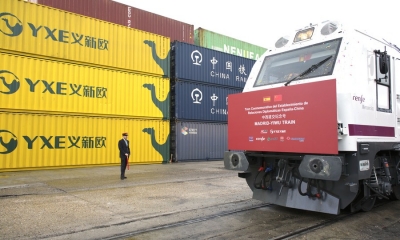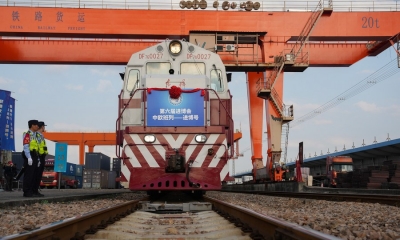China’s Economy Is Set to Roar back

Having adjusted its pandemic approach, the country has successfully pivoted beyond pandemic prevention and control measures so that it can once again focus on reattaining economic growth.
As Chinese New Year approaches, the 2023 holiday season is set to be the most special for a long time. Why so? Because it marks the first in three years that has not been beset by disruptions caused by the COVID-19 pandemic, freeing millions of families to make the annual trip to their hometowns after years of uncertainty. Inquiries for China’s domestic travel services during the Spring Festival holiday soared nearly twenty-fold compared with last year. As such, the year of the rabbit will be a more prosperous one for everyone involved.
The economic impact of the Spring Festival period will be significant in setting the tone for the year ahead. In particular, it will mark the return of China’s consumer, retail, leisure, and travel industries. As quoted by Xinhua news: “Fresh, positive signs have shown that sectors ranging from tourism to services and catering are returning to their pre-pandemic levels, indicating that an economy with 1.4 billion people is headed for a fast recovery.”
Shops throughout the country are already revitalizing. One index that tracks shopper foot traffic in 83 cities across the nation found that shopper activity had increased by 28.7% compared with the previous month. Similarly, China’s cinema industry, hit hard by the pandemic, is also recovering, with over 10,640 cinemas having reopened for business nationwide, the highest number in nearly 10 months.

The growing confidence of businesses throughout the country is also reflected by high-level indicators. Firstly, China’s key stock markets, the Shanghai and Shenzhen composite indexes, have surged, with the former having gained 100 points in the past five days and the latter over 400. Similarly, China’s renminbi (yuan) has also gained significant value – a sign of resilience in the country’s economic performance – having rebounded to 6.7135 and offsetting a fall against the dollar brought about by the U.S. Federal Reserve’s hiking of interest rates, which impacted currencies around the world.
The strengthening of the yuan reflects an increased inflow of foreign capital back into China. Foreign investors increased holdings of Chinese debt by $5.1 billion in December, the first month with net inflows since February 2022, according to a report by the South China Morning Post. Moreover, such investors also added $6.3 billion to Chinese equities in December. In total, foreign investors injected $11.4 billion into Chinese stocks and bonds in the final month of 2022.
All of this puts China on course for a very strong recovery and, contrary to negativity pushed by the Western mainstream media, illustrates the fundamental strength and resilience of the Chinese economy. Morgan Stanley, for example, forecasts that in 2023, China’s GDP will grow by 5.4%. It is expected, in turn, that the government will opt to support the economy through several stimulus policies. This will once again ensure China’s position as a driver of global growth and a bastion of stability. As the Financial Times even notes: “There are signs that the disruption is fading fast. Some indicators suggest that peak infections in some cities will soon pass, worker shortages are easing, and consumers are spending again.”
China’s economy is set to roar back. Having adjusted its pandemic approach, the country has successfully pivoted beyond pandemic prevention and control measures so that it can once again focus on reattaining economic growth. Observers have noted that 2023 will be defined by this priority. It is important then, never to bet against the Chinese economy, as with its size, potential, and continued growth trajectory, it will continue to move from strength to strength, and despite three years of a tenuous geopolitical climate and unprecedented disruptions, it has fared rather well.
 Facebook
Facebook
 Twitter
Twitter
 Linkedin
Linkedin
 Google +
Google +







